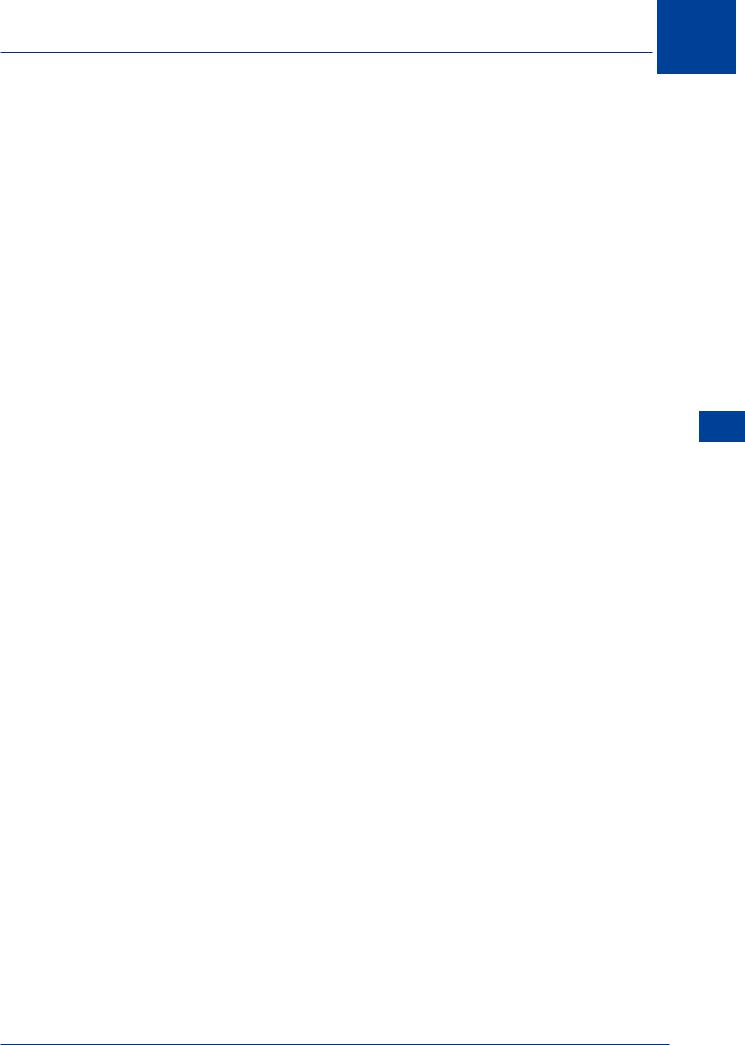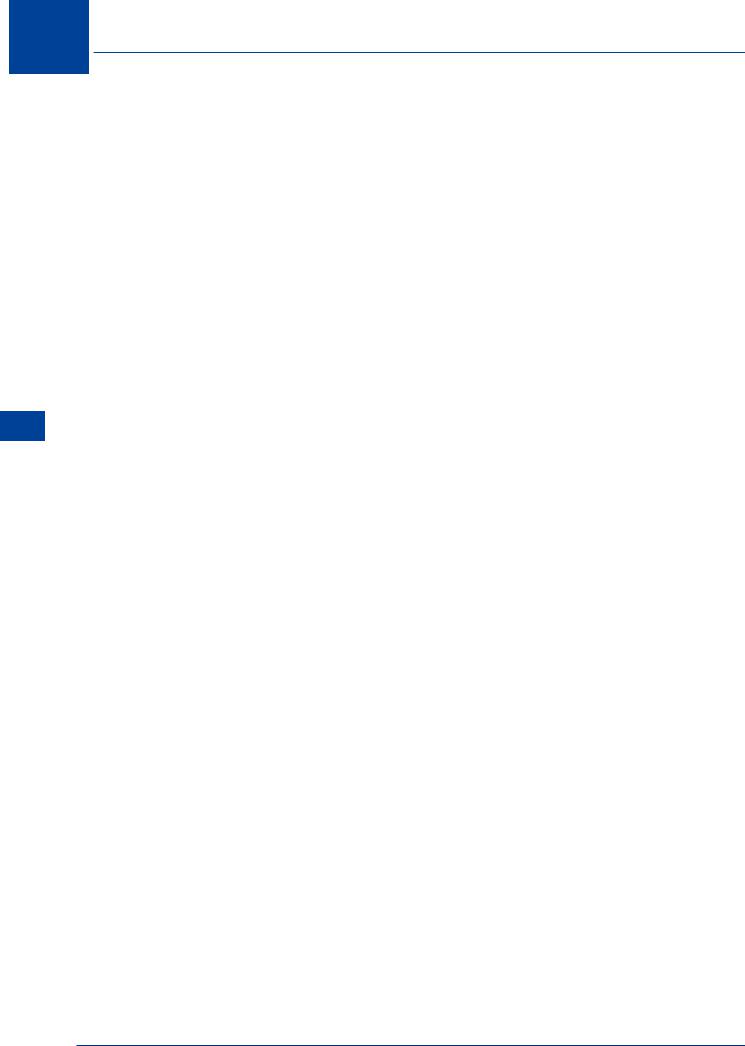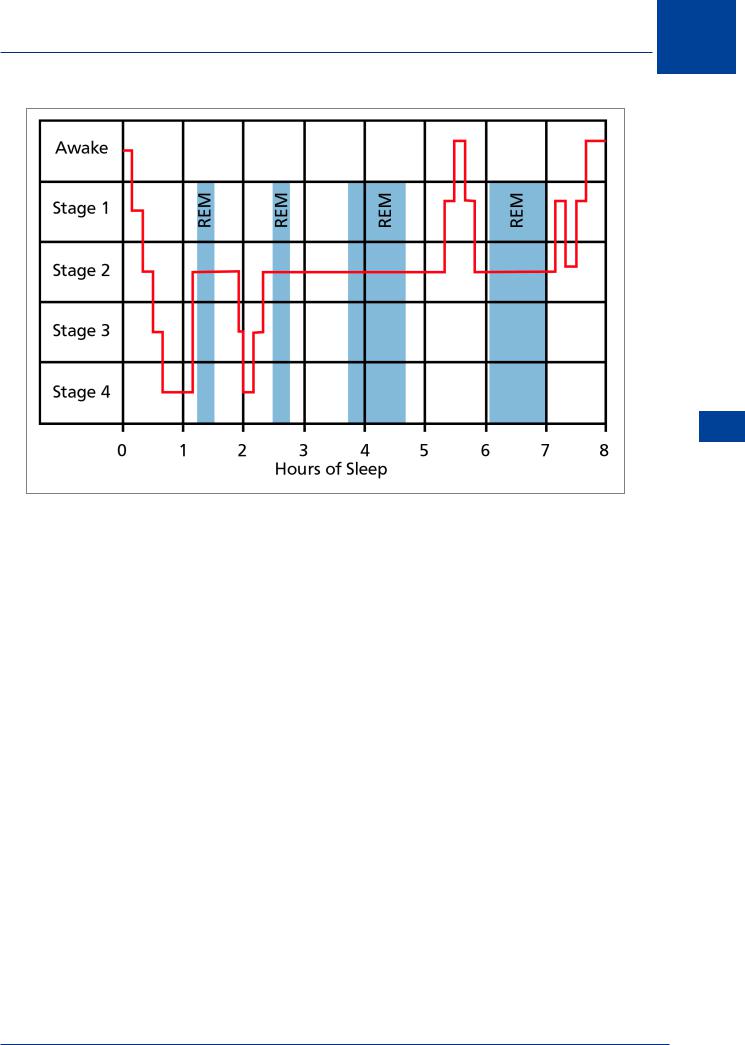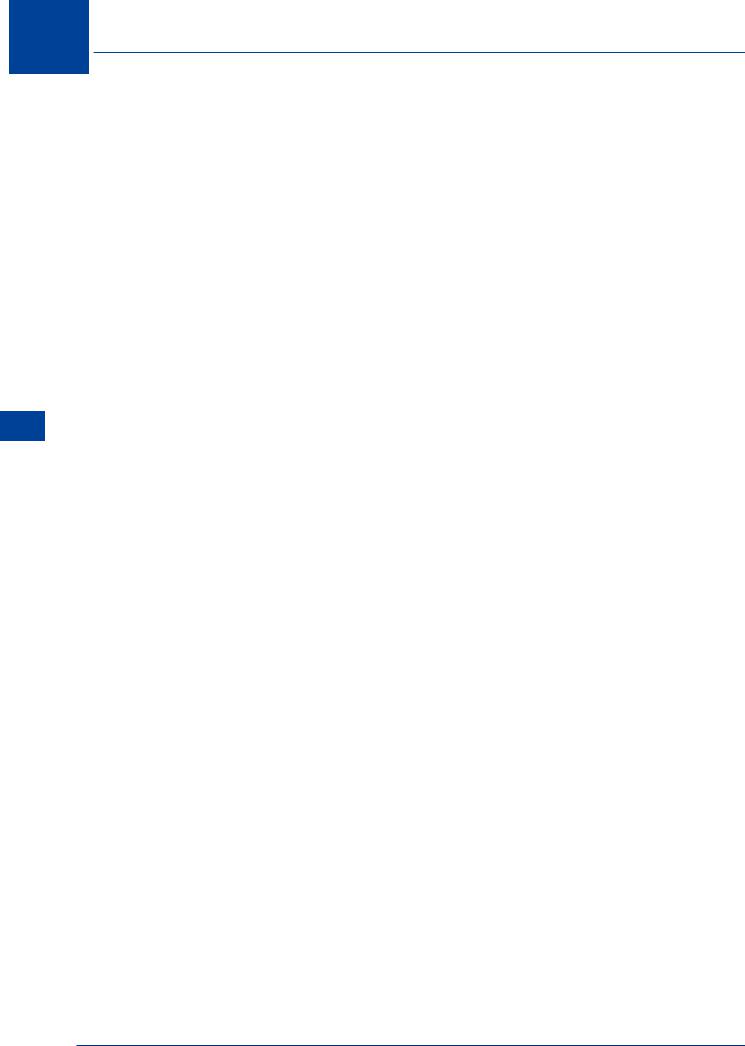
- •Textbook Series
- •Contents
- •1 Basic Concepts
- •The History of Human Performance
- •The Relevance of Human Performance in Aviation
- •ICAO Requirement for the Study of Human Factors
- •The Pilot and Pilot Training
- •Aircraft Accident Statistics
- •Flight Safety
- •The Most Significant Flight Safety Equipment
- •Safety Culture
- •Reason’s Swiss Cheese Model
- •The Five Elements of Safety Culture
- •Flight Safety/Threat and Error Management
- •Threats
- •Errors
- •Undesired Aircraft States
- •Duties of Flight Crew
- •2 The Circulation System
- •Blood Circulation
- •The Blood
- •Composition of the Blood
- •Carriage of Carbon Dioxide
- •The Circulation System
- •What Can Go Wrong
- •System Failures
- •Factors Predisposing to Heart Attack
- •Insufficient Oxygen Carried
- •Carbon Monoxide
- •Smoking
- •Blood Pressure
- •Pressoreceptors and their Function Maintaining Blood Pressure
- •Function
- •Donating Blood and Aircrew
- •Pulmonary Embolism
- •Questions
- •Answers
- •3 Oxygen and Respiration
- •Oxygen Intake
- •Thresholds of Oxygen Requirements Summary
- •Hypoxic Hypoxia
- •Hypoxic Hypoxia Symptoms
- •Stages/Zones of Hypoxia
- •Factors Determining the Severity of and the Susceptibility to Hypoxic Hypoxia
- •Anaemic Hypoxia
- •Time of Useful Consciousness (TUC)
- •Times of Useful Consciousness at Various Altitudes
- •Effective Performance Time (EPT)
- •Hyperventilation
- •Symptoms of Hyperventilation
- •Hypoxia or Hyperventilation?
- •Cabin Pressurization
- •Cabin Decompression
- •Decompression Sickness (DCS)
- •DCS in Flight and Treatment
- •Questions
- •Answers
- •4 The Nervous System, Ear, Hearing and Balance
- •Introduction
- •The Nervous System
- •The Sense Organs
- •Audible Range of the Human Ear and Measurement of Sound
- •Hearing Impairment
- •The Ear and Balance
- •Problems of Balance and Disorientation
- •Somatogyral and Somatogravic Illusions
- •Alcohol and Flying
- •Motion Sickness
- •Coping with Motion Sickness
- •Questions
- •Answers
- •5 The Eye and Vision
- •Function and Structure
- •The Cornea
- •The Iris and Pupil
- •The Lens
- •The Retina
- •The Fovea and Visual Acuity
- •Light and Dark Adaptation
- •Night Vision
- •The Blind Spot
- •Stereopsis (Stereoscopic Vision)
- •Empty Visual Field Myopia
- •High Light Levels
- •Sunglasses
- •Eye Movement
- •Visual Defects
- •Use of Contact Lenses
- •Colour Vision
- •Colour Blindness
- •Vision and Speed
- •Monocular and Binocular Vision
- •Questions
- •Answers
- •6 Flying and Health
- •Flying and Health
- •Acceleration
- •G-forces
- •Effects of Positive G-force on the Human Body
- •Long Duration Negative G
- •Short Duration G-forces
- •Susceptibility and Tolerance to G-forces
- •Summary of G Tolerances
- •Barotrauma
- •Toxic Hazards
- •Body Mass Index (BMI)
- •Obesity
- •Losing Weight
- •Exercise
- •Nutrition and Food Hygiene
- •Fits
- •Faints
- •Alcohol and Alcoholism
- •Alcohol and Flying
- •Drugs and Flying
- •Psychiatric Illnesses
- •Diseases Spread by Animals and Insects
- •Sexually Transmitted Diseases
- •Personal Hygiene
- •Stroboscopic Effect
- •Radiation
- •Common Ailments and Fitness to Fly
- •Drugs and Self-medication
- •Anaesthetics and Analgesics
- •Symptoms in the Air
- •Questions
- •Answers
- •7 Stress
- •An Introduction to Stress
- •The Stress Model
- •Arousal and Performance
- •Stress Reaction and the General Adaption Syndrome (GAS)
- •Stress Factors (Stressors)
- •Physiological Stress Factors
- •External Physiological Factors
- •Internal Physiological Factors
- •Cognitive Stress Factors/Stressors
- •Non-professional Personal Factors/Stressors
- •Stress Table
- •Imaginary Stress (Anxiety)
- •Organizational Stress
- •Stress Effects
- •Coping with Stress
- •Coping with Stress on the Flight Deck
- •Stress Management Away from the Flight Deck
- •Stress Summary
- •Questions
- •Answers
- •Introduction
- •Basic Information Processing
- •Stimuli
- •Receptors and Sensory Memories/Stores
- •Attention
- •Perception
- •Perceived Mental Models
- •Three Dimensional Models
- •Short-term Memory (Working Memory)
- •Long-term Memory
- •Central Decision Maker and Response Selection
- •Motor Programmes (Skills)
- •Human Reliability, Errors and Their Generation
- •The Learning Process
- •Mental Schema
- •Questions
- •Answers
- •9 Behaviour and Motivation
- •An Introduction to Behaviour
- •Categories of Behaviour
- •Evaluating Data
- •Situational Awareness
- •Motivation
- •Questions
- •Answers
- •10 Cognition in Aviation
- •Cognition in Aviation
- •Visual Illusions
- •An Illusion of Movement
- •Other Sources of Illusions
- •Illusions When Taxiing
- •Illusions on Take-off
- •Illusions in the Cruise
- •Approach and Landing
- •Initial Judgement of Appropriate Glideslope
- •Maintenance of the Glideslope
- •Ground Proximity Judgements
- •Protective Measures against Illusions
- •Collision and the Retinal Image
- •Human Performance Cognition in Aviation
- •Special Situations
- •Spatial Orientation in Flight and the “Seat-of-the-pants”
- •Oculogravic and Oculogyral Illusions
- •Questions
- •Answers
- •11 Sleep and Fatigue
- •General
- •Biological Rhythms and Clocks
- •Body Temperature
- •Time of Day and Performance
- •Credit/Debit Systems
- •Measurement and Phases of Sleep
- •Age and Sleep
- •Naps and Microsleeps
- •Shift Work
- •Time Zone Crossing
- •Sleep Planning
- •Sleep Hygiene
- •Sleep and Alcohol
- •Sleep Disorders
- •Drugs and Sleep Management
- •Fatigue
- •Vigilance and Hypovigilance
- •Questions
- •Answers
- •12 Individual Differences and Interpersonal Relationships
- •Introduction
- •Personality
- •Interactive Style
- •The Individual’s Contribution within a Group
- •Cohesion
- •Group Decision Making
- •Improving Group Decision Making
- •Leadership
- •The Authority Gradient and Leadership Styles
- •Interacting with Other Agencies
- •Questions
- •Answers
- •13 Communication and Cooperation
- •Introduction
- •A Simple Communications Model
- •Types of Questions
- •Communications Concepts
- •Good Communications
- •Personal Communications
- •Cockpit Communications
- •Professional Languages
- •Metacommunications
- •Briefings
- •Communications to Achieve Coordination
- •Synchronization
- •Synergy in Joint Actions
- •Barriers to Crew Cooperation and Teamwork
- •Good Team Work
- •Summary
- •Miscommunication
- •Questions
- •Answers
- •14 Man and Machine
- •Introduction
- •The Conceptual Model
- •Software
- •Hardware and Automation
- •Intelligent Flight Decks
- •Colour Displays
- •System Active and Latent Failures/Errors
- •System Tolerance
- •Design-induced Errors
- •Questions
- •Answers
- •15 Decision Making and Risk
- •Introduction
- •The Mechanics of Decision Making
- •Standard Operating Procedures
- •Errors, Sources and Limits in the Decision-making Process
- •Personality Traits and Effective Crew Decision Making
- •Judgement Concept
- •Commitment
- •Questions
- •Answers
- •16 Human Factors Incident Reporting
- •Incident Reporting
- •Aeronautical Information Circulars
- •Staines Trident Accident 1972
- •17 Introduction to Crew Resource Management
- •Introduction
- •Communication
- •Hearing Versus Listening
- •Question Types
- •Methods of Communication
- •Communication Styles
- •Overload
- •Situational Awareness and Mental Models
- •Decision Making
- •Personality
- •Where We Focus Our Attention
- •How We Acquire Information
- •How We Make Decisions
- •How People Live
- •Behaviour
- •Modes of Behaviour
- •Team Skill
- •18 Specimen Questions
- •Answers to Specimen Papers
- •Revision Questions
- •Answers to Revision Questions
- •Specimen Examination Paper
- •Answers to Specimen Examination Paper
- •Explanations to Specimen Examination Paper
- •19 Glossary
- •Glossary of Terms
- •20 Index

Sleep and Fatigue 11
Body temperature variations throughout the day follow a regular cycle. The highest temperature occurs around 1700 hours and the lowest at about 0500 hours, at which time we are least efficient and the desire for sleep is at its peak.
Timing Planned Sleep
Time spent awake is important in determining readiness for sleep but there is also a circadian rhythm of sleep. This means that at certain times of the day even the sleep-deprived individual may have difficulty in falling asleep. It is the timing of sleep not the amount of time awake that is the critical factor in determining sleep duration. As indicated earlier, the duration of sleep is linked to the body temperature cycle.
Sleep taken at times near the temperature peak or when the temperature is falling will be longer and more refreshing than sleep taken when body temperature is rising. Aircrew attempting to sleep when the body temperature is on the rise will have considerably more difficulty getting to sleep, and if successful, will usually awaken within a relatively short period of time.
Time of Day and Performance
As well as the circadian rhythms of temperature and other basic physiological processes, there are rhythms for more complex behaviours. Performance of different tasks is affected by the time of day. Simple tasks, requiring little short-term memory input, follow the pattern of body temperature. Performance improves as temperature increases and declines as the temperature decreases. Performance using short-term memory tasks declines throughout the day. Verbal reasoning and mental arithmetic skills peak around midday.
Accident statistics have been examined to detect a correlation between time of day and accidents. It has been found that driving accidents peak at certain times of the day, for example 1500 hours, but other factors, such as traffic density and road conditions will also affect the results.
With regards to aviation accidents, the time of day has been noted as a causal factor in a number of incidents.
Credit/Debit Systems
General
The sleep/wake cycle can be thought of as a credit and debit system. In this system the individual is given two points for every hour spent asleep and has one point deducted for every hour spent awake. This is only a rough measure, as individuals vary considerably in the amount of sleep they require.
Sleep Credit Limit
The maximum credit available is 16 points. You cannot store credit points above 16 in anticipation of a long period of awake. A sleep of 10 to 12 hours after a long period of strenuous activity will only give the 16 credits and the individual will feel sleepy again after 16 hours, not after 20 to 24 hours.
However, if a period of wakefulness is significantly foreshortened (the individual is still in a state of sleep credit) then a good sleep is unlikely.
Sleep and Fatigue 11
207

11
Fatigue and Sleep 11
Sleep and Fatigue
Sleep Debit
The fewer points you have the readier you are to sleep. Normally the person will sleep when he/she has little or no credit and will sleep for about eight hours, followed by a wakeful period of about sixteen hours when the sleep credit will be exhausted. A gradual reduction in level of credit may build up over a period of time as a ‘cumulative sleep debt’. It is important to realize performance reduction, resulting from sleep deprivation, increases with altitude.
Measurement and Phases of Sleep
(see Figure 11.3)
Measurement
Laboratory experiments have revealed a great deal about the various sleep phases. Volunteers have undergone a number of measurements and observations whilst they are asleep. The devices used include:
•Electroencephalogram (EEG) - to record the electrical activity of the brain
•Electrooculogram (EOG) - to measure eye movement within the eye socket
•Electromyogram (EMG) - to measure muscle tension or relaxation
Sleep Stages
(see Figure 11.3) The stages of sleep are classified into 4 stages:
Stage 1
The sleeper is in a very light sleep. It is a transitional phase between waking and sleeping; if woken at this stage the volunteer may claim that he has not even been asleep. In early sleep we pass through about 10 minutes of stage 1 before moving to the deeper stage 2.
Stage 2
In early sleep we spend about 20 minutes in stage 2 before moving on to the deeper stages 3 & 4. About 50% of a normal sleep is spent in stage 2.
Stages 3 & 4
During Stages 3 & 4 sleep:
•The brain is semiactive emitting long slow waves measured by EEG tracings and thus it is commonly referred to as ‘slow wave’ or orthodox sleep.
•The eyes are stationary behind the eyelids.
•The muscles are relaxed.
•Choking or crushing dreams.
208

Sleep and Fatigue 11
Figure 11.3 Sleep profile for a typical night’s sleep
Function of SlowWave Sleep (Orthodox Sleep)
Slow wave sleep refreshes the body and is necessary for tissue restoration. After strenuous physical activity the body will require more slow wave sleep.
Rapid Eye Movement (REM) Sleep
Superimposed on the above 4 stages is REM (sometimes referred to as paradoxical sleep) which is quite different from orthodox sleep. In this phase:
•The brain is active and the EEG trace is similar to that of an individual who is fully awake whilst the other measurements show the person to be asleep.
•Rapid eye movement behind the eyelids are detected.
•Whereas there is near total muscle paralysis (thought to prevent the sleeper acting out dreams), there is frantic movement of the muscles of the eye. This motor activation occasionally breaks through resulting in twitching of the limbs.
•Complex, bizarre, and emotionally-coloured dreams take place.
Function of REM Sleep
REM sleep refreshes the brain. It strengthens and organizes the memory. After a period of learning new tasks or procedures REM sleep will increase. In addition, REM sleep contributes significantly to emotional equilibrium and good humour. Thus, irritability normally follows a period of disrupted sleep.
Sleep and Fatigue 11
209

11 Sleep and Fatigue
Fatigue and Sleep 11
Characteristics of Orthodox and Paradoxical Sleep
Some characteristics of orthodox and paradoxical sleep are:
Characteristic |
Orthodox Sleep |
Paradoxical Sleep |
|
|
|
EEG (brain waves) |
Large slow waves |
High frequency |
|
|
|
EOG (eyes) |
Still |
Rapid eye movements |
|
|
|
EMG (throat) |
Relaxed muscles |
Tensed muscles |
|
|
|
ECG (heart) |
Regular |
Irregular |
|
|
|
Dreaming |
Normally no recall |
Recall |
|
|
|
Sleep walking |
Yes |
No |
|
|
|
Body movements |
Less frequent |
More frequent |
|
|
|
Stomach acids |
Steady |
Increase |
|
|
|
Function |
Tissue restoration |
Memory organization |
|
|
|
Sleep Cycles
During any normal night’s sleep the pattern operates on an approximately 90 minute cycle. Towards the end of the first 90 minutes of falling asleep the first REM stage occurs but this first REM experience lasts only 10 to 20 minutes before the person passes back into slow wave sleep.
At the end of the second cycle of 90 minutes the duration of REM sleep periods increases.
Sleep Profile
A sleep profile for a typical night’s sleep is shown in Figure 11.3. The individual stages will vary depending on the activities prior to sleep. If a great deal of strenuous physical activity has taken place then the sleep stages 3 and 4 will be extended. Alternatively, if a lot of mental work has been undertaken, such as learning new information or procedures, then REM sleep will be increased.
Rebound Effect
Sleep deprivation experiments have shown that if a person is deprived of either slow wave or REM sleep there will be a ‘rebound’ effect in the next sleep period. That is the individual will make up the deficit in either case. For example if one is woken after 3 hours of a normal sleep period then the body will have had all its required slow wave sleep, but be deficient in REM sleep. In the next sleep period it is found that REM sleep will occur earlier and last longer than normal.
Age and Sleep
Individuals differ in the amount of sleep they require. In a survey of one million people the most frequently reported sleep duration was between 8 and 9 hours. Some people seem able to do with much less sleep and can manage quite well on 3 to 4 hours per night.
Ageing brings major changes in sleep requirements. New born babies may sleep for up to 23 hours per day (of which the majority is REM) and even as they grow older will require much
210
